新概念第L71课-He-is-awful-教案教学文稿
- 格式:doc
- 大小:34.00 KB
- 文档页数:6
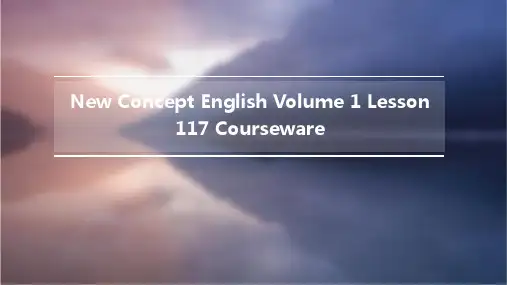
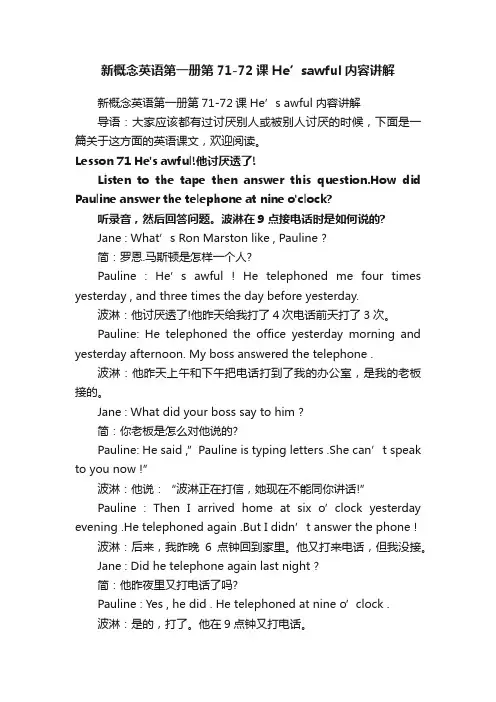
新概念英语第一册第71-72课He’sawful内容讲解新概念英语第一册第71-72课He’s awful内容讲解导语:大家应该都有过讨厌别人或被别人讨厌的时候,下面是一篇关于这方面的英语课文,欢迎阅读。
Lesson 71 He's awful!他讨厌透了!Listen to the tape then answer this question.How did Pauline answer the telephone at nine o'clock?听录音,然后回答问题。
波淋在9点接电话时是如何说的?Jane : What’s Ron Marston like , Pauline ?简:罗恩.马斯顿是怎样一个人?Pauline : He’s awful ! He telephoned me four times yesterday , and three times the day before yesterday.波淋:他讨厌透了!他昨天给我打了4次电话前天打了3次。
Pauline: He telephoned the office yesterday morning and yesterday afternoon. My boss answered the telephone .波淋:他昨天上午和下午把电话打到了我的办公室,是我的老板接的。
Jane : What did your boss say to him ?简:你老板是怎么对他说的?Pauline: He said ,”Pauline is typing letters .She can’t speak to you now !”波淋:他说:“波淋正在打信,她现在不能同你讲话!”Pauline : Then I arrived home at six o’clock yesterday evening .He telephoned again .But I didn’t answer the phone !波淋:后来,我昨晚6点钟回到家里。
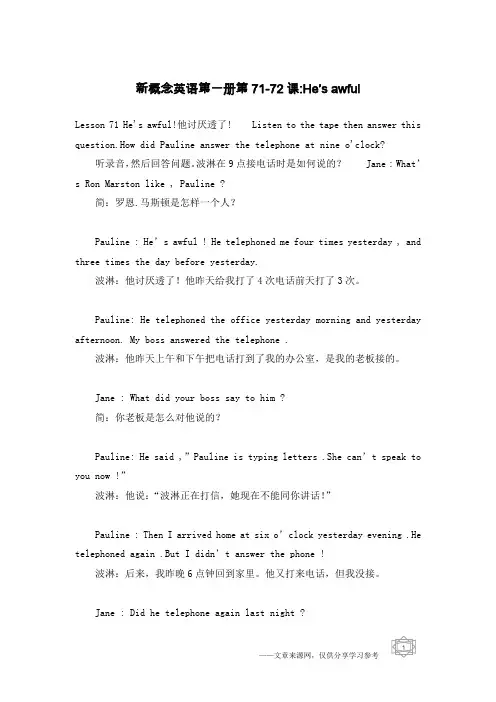
新概念英语第一册第71-72课:He’s awfulLesson 71 He's awful!他讨厌透了! Listen to the tape then answer this question.How did Pauline answer the telephone at nine o'clock?听录音,然后回答问题。
波淋在9点接电话时是如何说的?Jane : What’s Ron Marston like , Pauline ?简:罗恩.马斯顿是怎样一个人?Pauline : He’s awful ! He telephoned me four times yesterday , and three times the day before yesterday.波淋:他讨厌透了!他昨天给我打了4次电话前天打了3次。
Pauline: He telephoned the office yesterday morning and yesterday afternoon. My boss answered the telephone .波淋:他昨天上午和下午把电话打到了我的办公室,是我的老板接的。
Jane : What did your boss say to him ?简:你老板是怎么对他说的?Pauline: He said ,”Pauline is typing letters .She can’t speak to you now !”波淋:他说:“波淋正在打信,她现在不能同你讲话!”Pauline : Then I arrived home at six o’clock yesterday evening .He telephoned again .But I didn’t answer the phone !波淋:后来,我昨晚6点钟回到家里。
他又打来电话,但我没接。
Jane : Did he telephone again last night ?简:他昨夜里又打电话了吗?Pauline : Yes , he did . He telephoned at nine o’clock .波淋:是的,打了。

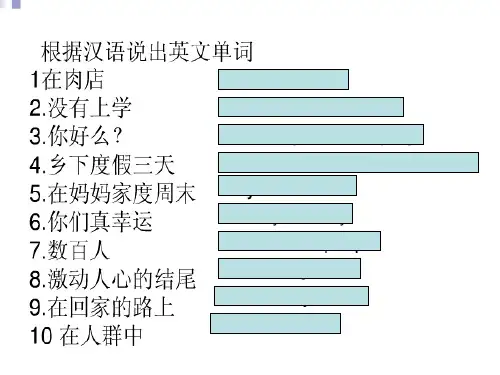
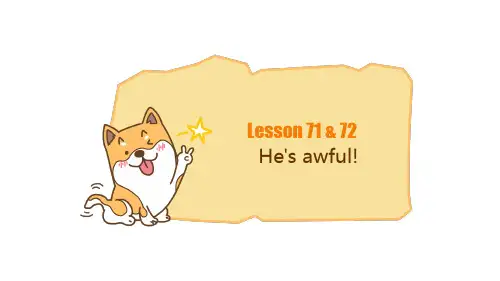
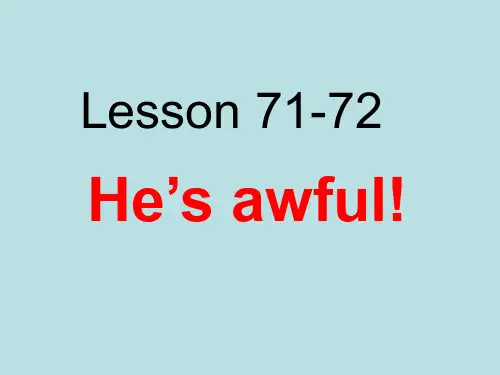
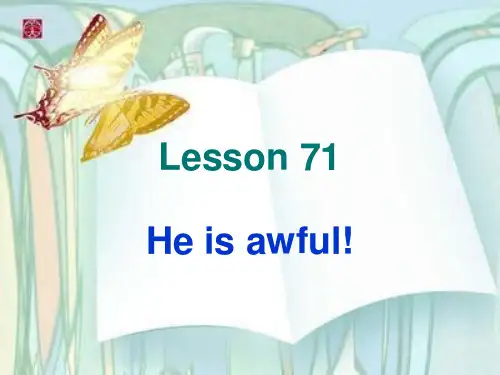
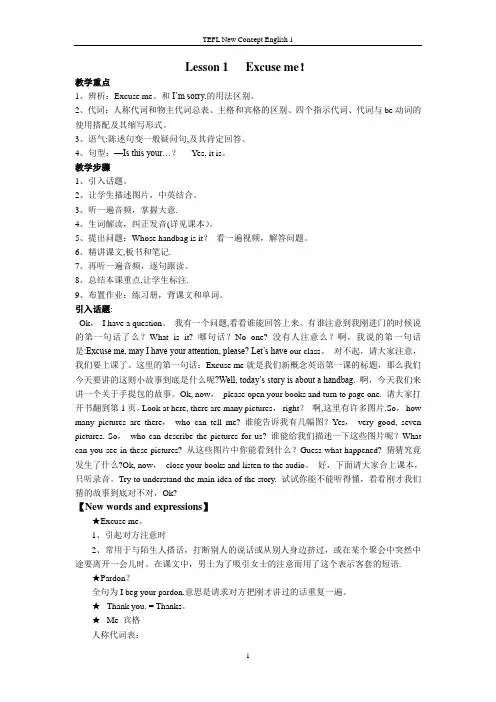
Lesson 1 Excuse me!教学重点1、辨析:Excuse me。
和I’m sorry.的用法区别。
2、代词:人称代词和物主代词总表、主格和宾格的区别、四个指示代词、代词与be动词的使用搭配及其缩写形式。
3、语气:陈述句变一般疑问句,及其肯定回答。
4、句型:—Is this your…?-Yes, it is。
教学步骤1、引入话题。
2、让学生描述图片,中英结合。
3、听一遍音频,掌握大意.4、生词解读,纠正发音(详见课本)。
5、提出问题:Whose handbag is it?看一遍视频,解答问题。
6、精讲课文,板书和笔记.7、再听一遍音频,逐句跟读。
8、总结本课重点,让学生标注.9、布置作业:练习册,背课文和单词。
引入话题:Ok,I have a question。
我有一个问题,看看谁能回答上来。
有谁注意到我刚进门的时候说的第一句话了么?What is it? 哪句话?No one? 没有人注意么?啊,我说的第一句话是:Excuse me, may I have your attention, please? Let’s have our class。
对不起,请大家注意,我们要上课了。
这里的第一句话:Excuse me就是我们新概念英语第一课的标题,那么我们今天要讲的这则小故事到底是什么呢?Well, today’s story is about a handbag. 啊,今天我们来讲一个关于手提包的故事。
Ok, now,please open your books and turn to page one. 请大家打开书翻到第1页。
Look at here, there are many pictures,right?啊,这里有许多图片.So,how many pictures are there,who can tell me? 谁能告诉我有几幅图?Yes,very good, seven pictures. So,who can describe the pictures for us? 谁能给我们描述一下这些图片呢?What can you see in these pictures? 从这些图片中你能看到什么?Guess what happened? 猜猜究竟发生了什么?Ok, now,close your books and listen to the audio。
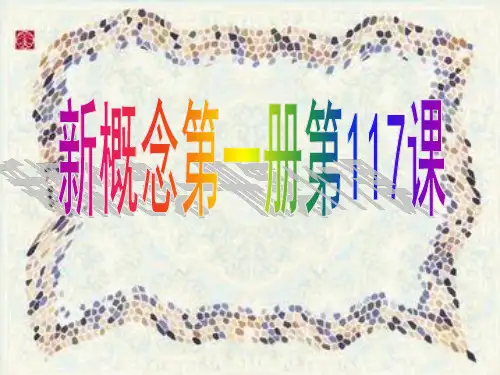
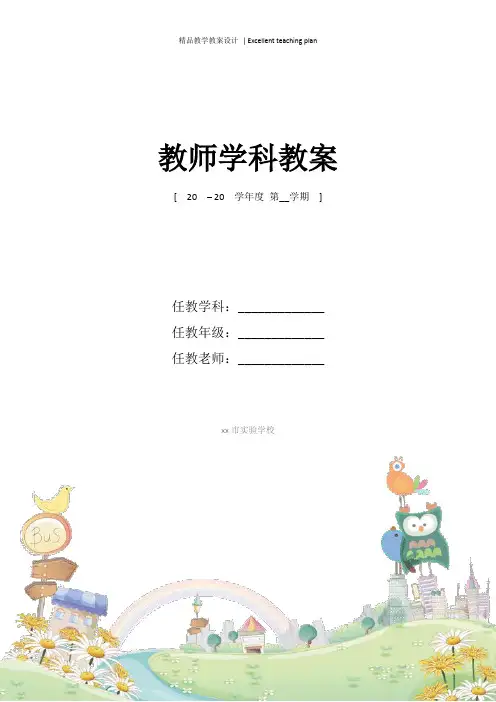
教师学科教案[ 20 – 20 学年度第__学期]任教学科:_____________任教年级:_____________任教老师:_____________xx市实验学校New Concept English ITeaching content: L71 72 By: Miss Mo Teaching aims: Date: Oct.14th ,20121.Ss review the use of the Past Simple tense.2.Ss study more on regular verbs' past forms.Teaching methods:1.Audio lingual approach.2.Pair work and group work.petition and role-play method.Teaching procedures:Step One: Warm up1. Greeting.2. Revision--Ss recite Lesson67 69--Check Homework.3. Free talk:WeatherStep Two: Lead in New Lesson and presentation.L71 1. Learn in new words &expressions--Ask Ss to read this words by themselves.--Then T to teach Ss to read.--At last, read together and then check Ss to read.2. Lead in Lesson- T/S look at the pictures on P141, and try to tell why he is awful.3.Presetation--Ss watch the video th en answer this question, “How did Pauline answer the telephone at nine o’clock?”--T/S study the dialogue between Jane and Pauline together, pay attention to the use of the Past Simple tense, especially regular verbs' past forms there.--Ss read the dialogue aloud once.--T/S try to retell the story in their own words.4. Key patternsComprehension1 T: Is Ron Marston nice? S: No, he isn’t.2 T: What’s he like? S: He’s awful.3 T: What did Ron Marston do yesterday? S: He telephoned Pauline four times.$ T: How many times did he telephone the day before yesterday? S: Three times.5 T: When did Ron Marston telephone the office? S: Yesterday morning andyesterday afternoon.6 t: Who answered the telephone? S: Pauline did.7 T: What time did Pauline arrive home yesterday evening? S: At six o’clock.8 T: Did she answer the phone? S: No, she didn’t.9 T: What time did Ron Marston telephone last night? S: At nine o’clock.10 T: Did he telephone you again? S: NO, he didn’t.Step Three: Lead in New Lesson and presentation.L72 1. Learn in new words &expressions--Ask Ss to read this words by themselves.--Then T to teach Ss to read.--At last, read together and then check Ss to read.2. Lead in Lesson--T/S first compare different times on TODAY, YESTERDAY and THE DAY BEFORE YESTERDAY in the box on P143.--T/S then study picture 1~15 on P143 for regular verbs’past forms, pay attention to the pronunciation of “ed”.--T/S do Exercise A on P144 together.--T/S study the example in Exercise B, Ss do Exercise 1~5 with a partner orally.--T/S check the answers.Step Four :Classroom activity: describing words.--Ss take turns and come up to the blackboard to write a word, other Ss try to explain or demonstrate the meaning in English. Let the teacher guess.Step Five: Homework1.Read English at least 20 minutes, recite L712.Copy and recite L71 724times,then have a dictation.3.Reading&Listening.4.Write composition.。
Lesson 71 ~ 72 He’s awful!!词汇详解(1) awful adj. 让人讨厌的,坏的e.g. He is awful. = He is very terrible.派生:awfully = very adv. 非常e.g. I am awfully sorry. = I am very sorry.(2) telephone v./n. 打电话;电话telephone sb. = phone sb.(3) time n. 次(数)time作可数名词:次数;作不可数名词:时间一次:once 两次:twice 三次:three times(4) answer v. 接(电话);回答a. 接电话answer the phoneb. 回答问题answer the question(5) last adj. 最后的,前一次的最后一个the last one 上次last time反义词first 第一个the first one(6) phone n. 电话(= telephone)挂电话rise off the phone = hang up the phone(7) again adv. 又一次地again 往往可以表示词缀:re-read it again= reread play it again= replay(8) say v. 说( say – said – said )区别:say、tell、speak①say 往往后面就跟说的内容或对象,如say sth. to sb.自言自语say to oneself② tell 往往具有告知的含义,如 tell sb. to do sth.说谎tell a lie 讲故事tell a story③ speak 后面往往是跟语言或人如speak to sb. 意为“与某人说话”,常用于打电话时e.g. 请让玛丽接电话好吗? May I speak to Mary, please?! 重点语法一般过去时II(1) be 动词的过去式有两种形式:was 和were (请参见 Lessons 67-68语法部分)(2) 实意动词的过去式变化形式可分为:规则变化和不规则变化" 规则变化,其规则如下:a. 一般情况加-ed :look →looked watch →watchedb. 以不发音的e 结尾的加-d :smile →smiled like →likedc. 以辅音字母+y 结尾,变y 为i 再加-ed :hurry →hurried carry →carriedd. 以一个辅音字母结尾的重读闭音节词,双写字尾加-ed :pat →patted" 另一部分动词的过去式拼写不规则,因此称为不规则动词,需牢记:go →went get →got have →had say →said do →did(3) 用一般过去时的句子中常常有表示过去某一时刻的时间状语,如: 昨天 yesterday 昨夜 last night前天the day before yesterday昨天上午 yesterday morning# 试一试:。